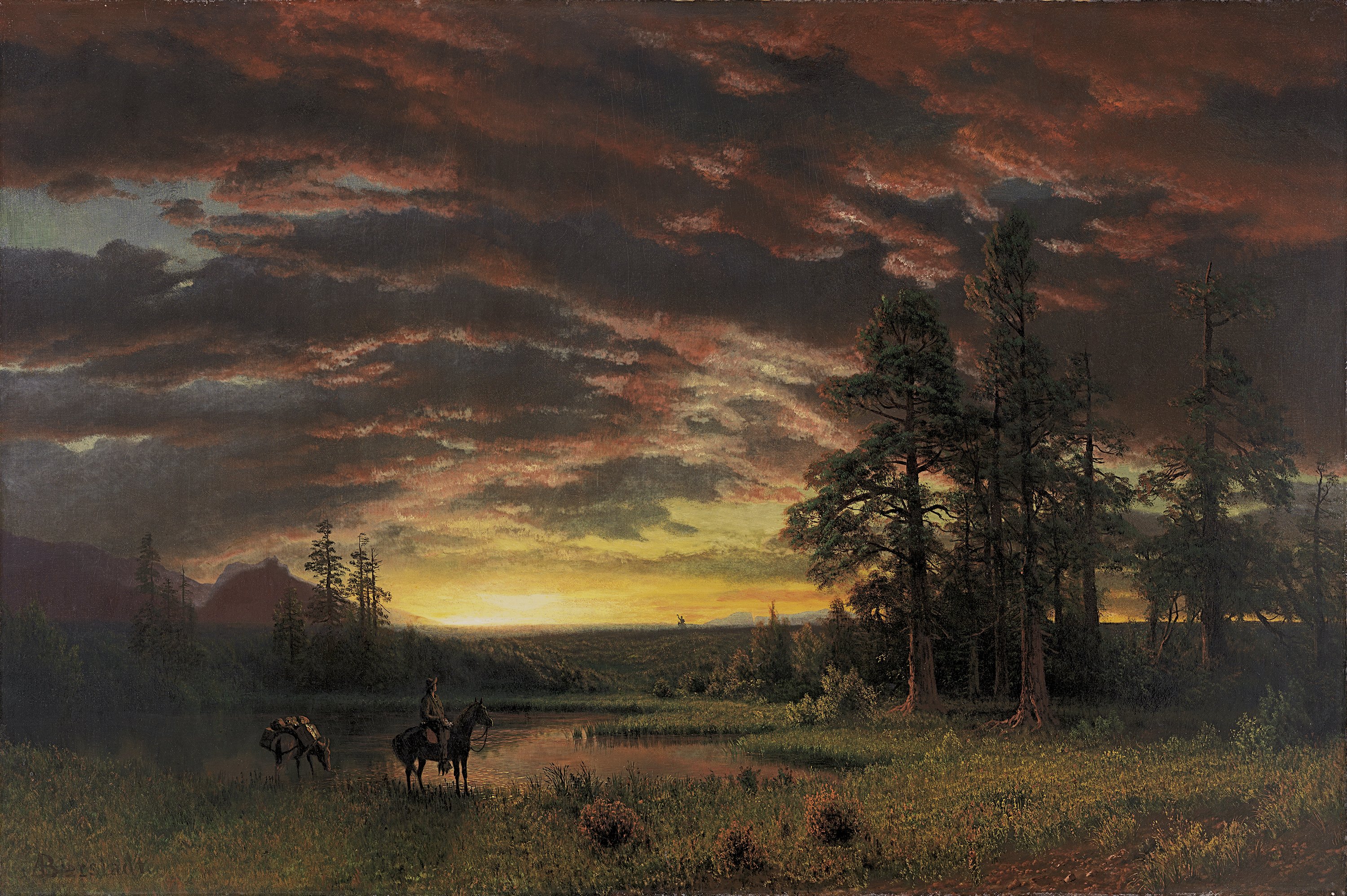Romance vs Realism
Much how advertisements and attitudes towards women's body imaging have changed in the past few decades (think stick thin supermodels of the 90's moving to advertisements of real women by Dove in the 00's), the progression from romanticism in paintings and art to the realism style evolved. Beginning with softened, enhanced, perfection portrayed in the romantic style of paintings featuring landscapes, ideal people, places and scenes, several artists rejected this style and demanded their art show people and places as they truly are.
Liberty Leading the People - Eugene Delacroix (1830) (Zygmont, B.)The above painting is a depiction of the July revolution that occurred in France by the working middle-class people following ordinances set by King Charles X. Lady Liberty is front and center, bosom exposed, waving the French flag in one hand and a bayoneted musket in the other leading the people forward over barricades and bodies. Definitely a romanticized portrayal of battle! The colors are soft, there is no blood or gruesomeness, even the expressions of the people are soft, almost passive. Painted the same year as the revolution, Delacroix is documenting a moment in history. He created the center character, Lady Liberty, as a symbol, a reminder, an empowering figure to embody the ideal political and social freedoms desired by the middle and working class. She is freedom. She is a figure familiar to us in America.

Evening on the Prairie by Albert Bierstadt (1870) (Alarco, P)
Bierstadt was a German born artist who moved to Massachusetts and became a prominent member of the Husdon River School. Bierstadt traveled West numerous times, documenting his travels in paintings. Above we see a beautiful sunset scene with two travelers on horse, mountains to the left and miles of open land. The colors are muted and blended with the brilliant setting sun dominating the center of the scene. Often when we hear of the explorers heading West, they talk about the harsh wildness of the land and yet this is a scene of soft, serene beauty, like you could lie by the water there and sleep peacefully. Very Thomas Kinkade.
The Desperate Man is a good example of the transition from romantisism to realism. Courbet painted this self-portrait early in his career in France and we can see still some of the romantic influence in the softness of his face, the rosiness in the cheeks, smooth soft lips and perfectly coiffed mustache. The realism aspect comes through in the eyes of Courbet as he clearly seems distraught, alarmed, or desperate. The light shining from the right shadows his face and we see the tension in his neck and hands as he claws at his head and hair. Why is the artist so desperate? It is not known. There is no context, background or hint other than an alarmed look with eyes staring right through the viewer and a mind clearly churning.
Painted by French artist Lepage, October significantly embodies the meaning of realism. A quick glance of the painting shows two women picking up potatoes in a field. Not that exciting. And yet, upon closer inspection you see the dirt on the center woman's apron, how she is glancing just over her nose to see that the potatoes roll out of her basket and into the sack. The women are clothed simply, no ornaments or accessories. The woman in the back is smiling making it easy to guess that they are possibly in conversation while at work. The whole scene is just so ordinary, so real and so beautifully captures the peak of fall when the reward of summer's toil is finally gathered. It is a combination of joy, labor, dirt, hard work and abundance. Looking at this painting, I call smell the tilled soil and feel the slight change in the air toward winter. I also feel the back pain and exhaustion of these women along with the gratitude that there will be food for the table. It is a beautiful, simple and very realistic painting.
I have a personal preference for realism art over romantic. I find the beauty shown in everyday, mundane people, places and actions to be captivating and inspiring. To see the beauty in how things truly are instead of how we wish them to be is a talent. Of the above paintings I would chose to hang October in my home. The simplicity of the subject matter of the painting is wonderfully contradicted by the feelings it evokes.
Sources:
Zygmont, Bryan. November 22, 2015. https://smarthistory.org/delacroix-liberty-leading-the-people/
Alarco, Paloma. https://www.museothyssen.org/en/collection/artists/bierstadt-albert/evening-prairie
Sharma, M. November 11, 2022. https://simplykalaa.com/le-desespere-gustave-courbet/
https://en.wikipedia.org/wiki/October_(painting)

.jpg)



Comments
Post a Comment